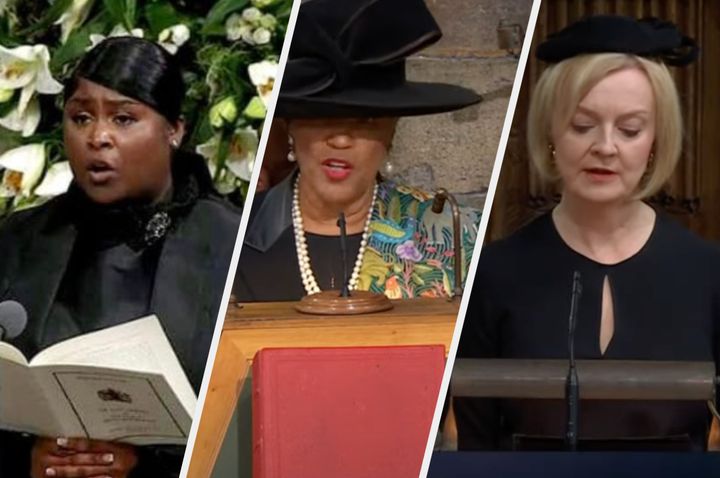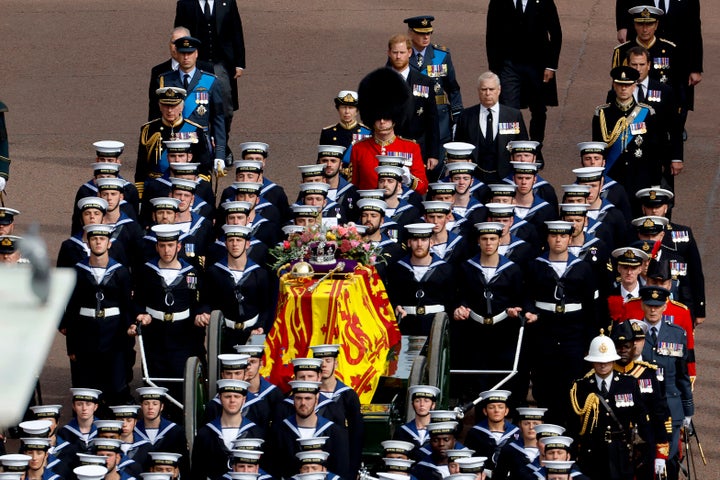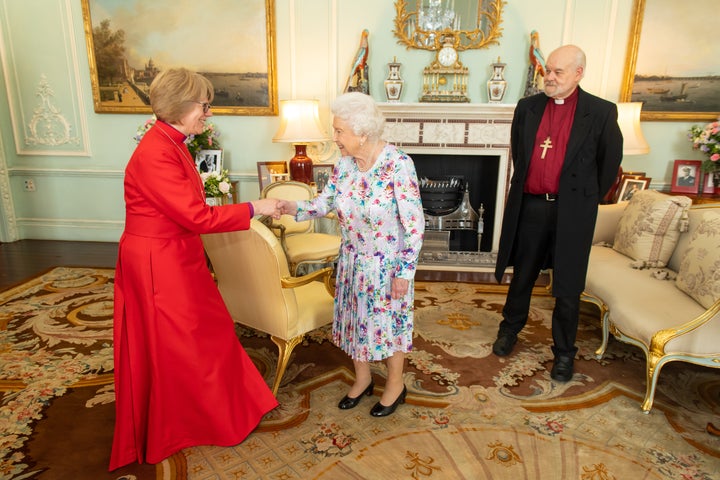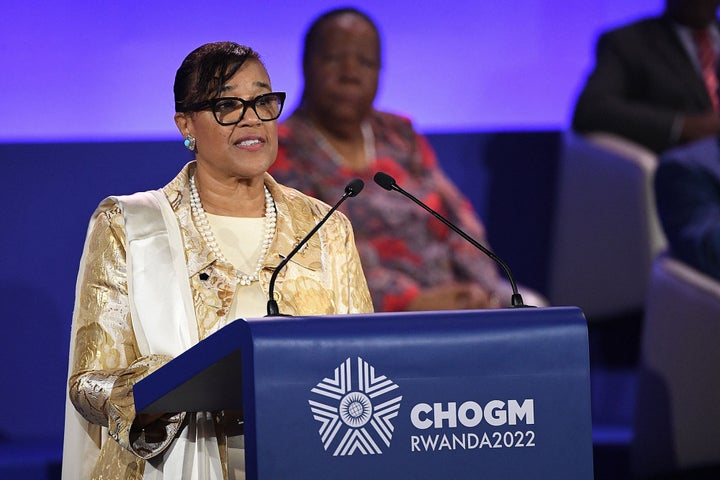
Queen Elizabeth II has finally been laid to rest, following a send-off on September 19 that was orchestrated with great levels of care.
Life in the UK came to a standstill at 11am on Monday when 28 million Brits tuned in to watch the Queen’s funeral, while leaders from around the world flew into London to pay their respects to Her Majesty, who died at the age of 96 on September 8.
Some tuning in noticed it was an overwhelmingly male affair, with the majority of military personnel, choir members and religious speakers being men and boys.
Paediatric allergist Mary McHenry tweeted her disappointment over the “lack of women and girls in the ceremony”, while behaviour and data scientist Professor Pragya Agarwal said even her six-year-old noticed that it was “mostly all men”.
They weren’t alone in their observations.
But some noted there were a lot more women involved in proceedings than you might’ve witnessed 50 years ago. Some progress, at least.
From the first female naval officers to pull the State Gun Carriage carrying the Queen’s coffin, to the female clergy who shared prayers, here are some of the history-making women involved in the Queen’s send-off.
El-Leigh Neal, Naval Officer

One of the first female naval officers to pull the State Gun Carriage of the Royal Navy at Queen Elizabeth’s funeral has spoken about the honour of pulling the carriage, saying she was chosen because of her strength.
Warrant Officer Class 2 El-Leigh Neal told The Telegraph she’d practised pulling the carriage around HMS Collingwood in preparation for the day, so they could give the Queen the send-off she deserved.
“I think everyone in the military, she was our boss, so everyone does feel that special connection with her,” she told the publication.
Those carrying Queen Elizabeth’s coffin during the services at Westminster and Windsor were all male soldiers from the Queen’s Company, 1st Battalion Grenadier Guards, so it was a huge moment to have female military personnel involved in the pulling of the State Gun Carriage.
The Queen was something of a military record-breaker herself, being the first female member of the Royal family to serve in the armed forces, according to the BBC.
Shermara Fletcher, Principle Officer for Pentecostal Relations
Fletcher, who is principal officer for pentecostal and charismatic relations at ChurchesTogether in England, shared a heartfelt word of prayer at the funeral service for those “whose hearts are heavy with grief and sorrow”.
She later tweeted to say it was a “historic moment” and “honour” to represent ChurchesTogether in England at the Queen’s funeral.
After the service, Reverend Richard Coles tweeted Fletcher to applaud her for the part she played in such a momentous occasion. “It was beautifully done Shermara, thank you,” he said.
Many of her followers tweeted to share their pride, too. “Beautifully spoken,” said one, while another added: “You did well. History making, I suspect.”
Dame Sarah Mullally, Bishop of London

The Bishop of London and Dean of His Majesty’s Chapels Royal also shared a prayer for the new King and the rest of the Royal family during the emotional service. “Endue them with thy Holy Spirit, enrich them with thy heavenly grace; prosper them with all happiness; and bring them to thine everlasting kingdom,” she said.
At a recent memorial service for the Queen held at St Paul’s Cathedral, Dame Mullally reportedly said the Queen “had a remarkable Christian faith, about which she had increasingly spoken in recent years, referring to Jesus Christ as her anchor and role model”.
The Reverend Canon Helen Cameron, Moderator of the Free Churches Group
Another moving prayer was shared by religious leader Helen Cameron, moderator of the Free Churches Group and one of the presidents of Churches Together in England, in recognition of Queen Elizabeth’s service to the United Kingdom.
Miriam Reveley, Organ Scholar
One of the younger organists involved in the occasion was Miriam Reveley, organ scholar at St George’s Windsor. Organist Anna Lapwood suggested she might be the first female organist to play at a state occasion, however some pointed out that French organist Jeanne Demessieux played at the Queen’s coronation.
That said, Reveley’s part in the day was still a huge moment for female musicians. It’s been a big year for her – on August 18, Reveley tweeted to say she has a deferred place to read music at Jesus College Cambridge as the first ever woman organ scholar.
Baroness Patricia Scotland, Secretary-General of the Commonwealth

Baroness Scotland, secretary-general of the Commonwealth, played a key role in the funeral, reading The First Lesson to the congregation.
The baroness grew up in Walthamstow, London, after her family moved to the UK from Dominica when she was two, according to My London. At 35, she became the youngest woman ever to be made a member of the Queen’s Counsel and was the first Black woman to be appointed as a QC in 1991.
Liz Truss, Prime Minister
The new prime minister, who met the Queen at Balmoral just days before she died, was also given a pivotal role in the funeral service, reading The Second Lesson.
After the funeral, Truss said she was “honoured” to have been invited to form a Government by Her Majesty the Queen “in one of her last acts”. She added that since then, she’s had two audiences with His Majesty the King, too.
Sarah Clarke, Black Rod
Sarah Clarke – who was appointed Lady Usher of the Black Rod in 2018, and in doing so made history as the first female Black Rod – was the first and last person to see the Queen lying in state, with clips showing her wipe back tears as she said goodbye to Her Majesty.
The Black Rod is a senior officer in the House of Lords, who is responsible for controlling access to and maintaining order within the House and its precincts.
Clarke, who helped organise the lying in state service and maintained the procession each day, was also seen in the funeral procession on Monday.
Judith Weir, Royal Composer
A special mention must go to royal composer Judith Weir, who played a key part in the day behind the scenes, composing ‘Like as the hart’ – a piece sung by the choir during the service. Inspired by Her Majesty’s “unwavering Christian faith”, it is a setting of Psalm 42 to music.
Weir, who is Master of The King’s Music and was appointed in 2014, writes music for royal and national occasions, according to the Telegraph.
May Parsons, Covid Nurse
There were thousands more women involved in the funeral procession, including May Parsons, the nurse who delivered the world’s first ever Covid-19 jab (outside a clinical trial).
She said it was “an honour and a privilege” to be playing a role in the Queen’s funeral.
Parsons, who is a modern matron for respiratory services at University Hospitals Coventry and Warwickshire Trust, famously delivered the first jab of the Pfizer vaccine to 90-year-old grandmother Maggie Keenan on December 8, 2020.
She was among several health workers and volunteers representing the NHS as they marched in the funeral procession with the Queen’s coffin as part of the Civilian Services Contingent.